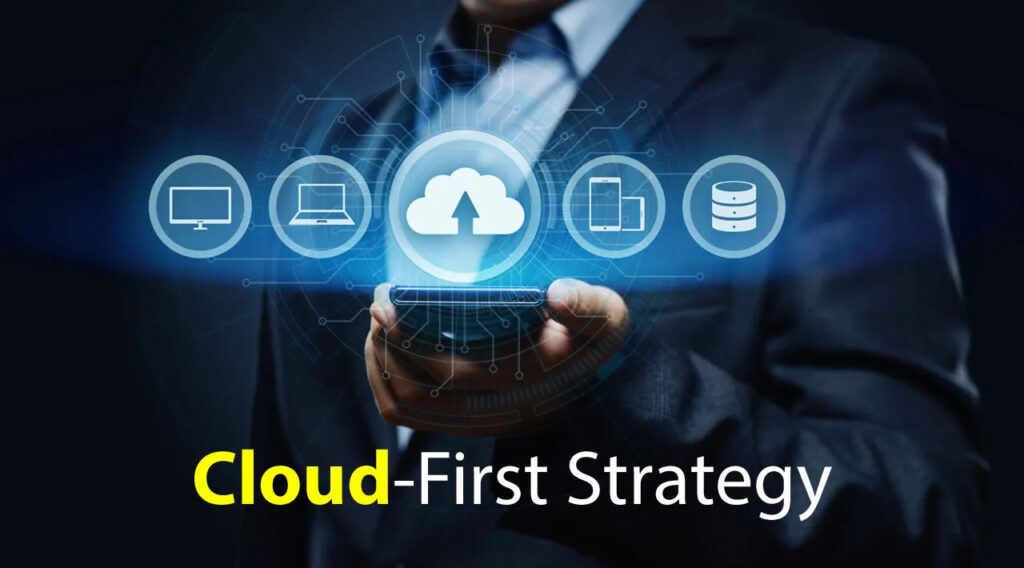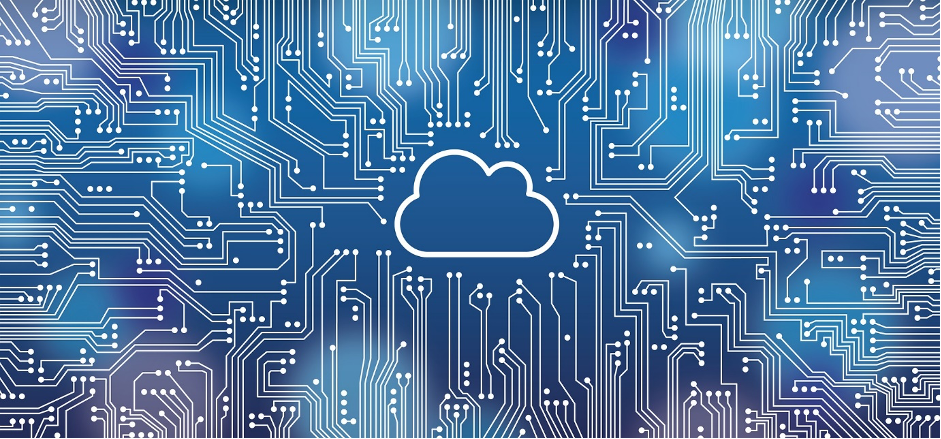There are thousands of free cloud storage services on the Internet, but as you might already know, free cloud storage works like clickbait. If you get started on a free plan, you’d most likely opt for your provider’s paid plan.
How relative a free plan is isn’t as crucial as the quality of the storage plan. This article will help you choose a free plan with the least risks.
Here are five pro tips to get you on the right track.
1. Research the provider’s reputation
Cloud storage service providers are like celebrities; they love to stay relevant. And to do that, they churn out paid posts, regular upgrades, newsletters, and scheduled security checks. In other words, they leave a trail of every move they make so you can follow it and be convinced that they’re perfect for you.
Well, those are not necessarily the key elements to look out for. Genuine reviews given by users are what truly counts. Read the reviews and comments about your providers’ services on communities like YouTube, Quora, and Reddit.
2. Review the customer support system
Throw several questions at your storage provider’s customer support team. How helpful and fast the help you need comes is a factor worth considering. A company with responsive staff members often offers the best services.
3. Only use free plans for personal data
The goal is to find a cloud storage provider that keeps to a set standard. You shouldn’t use your company’s or client’s data for such test runs. To help mitigate the impact of data loss, try using unimportant personal files during the trial phase.
4. Read the terms and conditions
Nobody ever reads the terms and conditions texts, but you should. Most service providers reveal their company’s policies in such text. They sometimes state how responsible they will be for security, backup retrieval, data loss, upgrades, and downtime. If these policies aren’t suitable for your business operations, you can always move on to the next one.
5. Check the pricing and upload limits
As stated at the outset, free plans eventually get users to subscribe to paid plans. Knowing how much the free program will cost to sustain is a smart move if the free program seems promising. Also, check for an upload limit and decide if you’d ever need to push past that limit.
At AiNET, we pride ourselves on the quality of our services. Our free plans are there to help you get started, and that’s why we ensure you get the best of everything on them. Plus we are very affordable too, so you can sustain the quality we provide.
A significant problem faced by cloud users is the hindrances they face in transferring their data from one platform to another. Some cloud providers make it too difficult and costly for the users, resulting in cloud lock-in.

Among major challenges faced by organizations using cloud services in the United States, 47% of the users faced cloud lock-in. Lock-in usually makes your business too much dependent on a specific cloud platform, which comes with certain repercussions in the long term.
Ensure Efficient Access to Data
The terms and regulations of a few providers make it difficult for you to access your personal data. You can avoid this situation by thoroughly reading the terms and conditions and ensuring efficient access to data.
Cloyd providers usually restrict your freedom in the name of technology-based rules. So, make sure you are aware of the procedures before you opt for the service.
Stay Away from Proprietary Data Formats
Most of the cloud providers store your data in compressed rather than the original form, such as they might store data in CSV format. So, if you want to access or extract the data, you have to go through a complex transformation process.
Consequently, you have to find ways to extract data, such as using the provider’s software. So, be aware of these data formats, as they restrict your freedom.
Be Aware of Distinctive APIs
Every cloud platform has its own specific APIs (Application Programming Interface). Though APIs make your platform distinctive, it is one of the major reasons for cloud lock-in.
It might be impossible to avoid APIs, as they are a significant part of each cloud vendor. However, you can combat this situation by using versatile integrations and avoiding vendor-specific features, no matter how promising they might seem.
Set Yourself Free from Distinctive Performance Characteristics
Every cloud vendor has some specific features that are specific to that specific platform. Though these features help a lot in the optimization of performance, they make you entity dependent and aggravate the cloud lock-in.
Wrapping Up!
Though the above-mentioned factors might seem like a serious problem, the efficiency, flexibility, and practicality of the cloud are undeniable. So, the only way out of this problem is to find a platform that helps you combat cloud lock-in.
If you are looking for a platform that offers top-notch service and frees you from the restrictions at the same time, AiNET is a go-to solution for you.
The global cloud computing market is expected to reach USD 947.3 billion by 2026. Anyone with a little knowledge of the technology would agree that the cloud is the future. Have you ever wondered what percentage of your organization’s workload depends on cloud-native technology? The number may vary depending on various factors. However, it is definitely greater than it used to be a few years back.
Cloud technology offers a plethora of benefits to all businesses irrespective of their size and nature of business operations. It is time for organizations to implement a cloud-first strategy to stay ahead of the curve. Here we discuss what is cloud-first approach and how your business can benefit from this strategy.
What Is a Cloud-First Strategy?
A cloud-first strategy is an approach where businesses prioritize the cloud as a solution. This approach suggests that businesses should first consider the cloud as a solution when adopting a new process or updating an existing system. They should go for other solutions only when the cloud fails to offer more benefits or when it is not suitable for one or more reasons.
Businesses adopt a cloud-first approach with the understanding that in a few years, on-premises infrastructure will become outdated and cause massive maintenance costs. Gartner analyst Milind Goverkar says 85% of the businesses will take a cloud-first approach by 2025 to reap the full benefit of agile technology. He further states that in the coming years, any IT infrastructure that is not cloud will be considered a legacy.
It is important to remember that a cloud-first approach doesn’t mean you need to migrate your entire IT infrastructure to the cloud. This approach allows you to retain your legacy system as long as they offer value.
Benefits of Adopting a Cloud-First Strategy
Cloud-first approach allows businesses to stay competitive in today’s fast-paced digital world. Some of the benefits offered by the cloud-first strategy are:
Cost-saving
The equipment and maintenance costs are dramatically reduced when you deploy a cloud-based solution. In fact, you get similar or even more computing power and storage at a fraction of your previous expenses. Cost-saving is often one of the key motivations for businesses to adopt the cloud.
Scalability
Cloud infrastructure offers you easy scalability. Businesses grow, and their needs change with time. It can be a pain to upgrade your physical server to meet your ever-changing requirement. With cloud technology, you can quickly scale up your infrastructure as and when needed. You only need to upgrade your current plan and pay more for additional resources.
Improved Productivity and Collaboration
Cloud-native infrastructure helps you streamline operation management across all departments. It is also ideal for a remote team working on the same project. The coordination becomes seamless, and in turn, it improves productivity and enables better collaboration.
Enhanced Disaster Recovery
Hardware failure, cyber-attack, and data loss events are real threats to any business. They can cause irreparable damage to any business. However, when all your information and applications are stored on cloud infrastructure, the recovery process becomes quick and easy. You can bring back all the data in no time and resume your operation as usual.
Ai.NET offers customized cloud computing setups suitable for all sizes of businesses. Let us know your requirements, and we will tailor the best solution for you.
Cloud computing has integrated into the business world like crazy, thanks to its ability to simplify business processes and data management. As cloud services become increasingly popular, technology constantly brings new options to the table. Two of them are serverless (Function as a service (FaaS)) and containers (Container Orchestration). But which one of them has the upper hand in serving the business’s needs? This question initiated the battle of serverless vs. containers cloud services.
To settle the competition, this guide will walk you through the main dissimilarities between serverless vs. containers. Hence, you can decide which one you should use for your business to meet your end goals. Let’s dig in!
Serverless vs. Container Cloud: Primary Difference
| Point of Difference | Serverless Cloud | Container Cloud |
| Supported Hosting | Public cloud-based services mostly support the serverless cloud. | Linux and some versions of Windows support container cloud. |
| Dependency | Needs to connect to a public cloud server. Ai.NET provides public cloud services to more than 30% of global traffic flow. | It can create an on-premises private network. Although public cloud frameworks are present, they are not widely used. |
| Costs | It depends on the subscription package of the public cloud service provider. Ai.NET provides affordable packages and hosts 1,000,000+ servers. | Since containers engines are open source, no subscription cost is involved. You have to pay once to get it installed. Afterward, you only have to pay for maintenance. |
| Availability | Requires a few seconds to minutes to complete their task before shutting down. | Available all the time. |
| Supported Languages | Limited languages are available from the provider. | Can support any language that suits the company’s needs. |
| Customization | Have to select from the available options only. | Has more freedom for customization. |
| Isolate Workload | Yes | Yes |
Which One Is Better For You?
Serverless Cloud Services
The CAGR (Compound Annual Growth Rate) of serverless cloud computing increases rapidly. It is estimated to hit a healthy CAGR of over 23.17% by 2026.
The serverless cloud can be a better choice for your business in these conditions:
- Suppose you need a cloud for a specific function for a short time. Like you want to run code to add your logo whenever someone uploads a picture.
- You have limited cloud usage that your subscription can easily cover.
Container Cloud Services
Companies worldwide claim that containerization plays a strategic role in their business. Container cloud services can serve you well too if:
- You want to move data quickly between servers.
- You have enough space to install and maintain the container.
- You want to switch between on-premises and the public cloud easily.
Serverless vs. Containers: Combined, They Serve The Best!
Several companies use serverless vs. containers cloud services together— and for all good reasons!
If the public server suffers an outage, a company can switch to its container server. Similarly, it is easier to save vulnerable information on containers while using the serverless cloud for supplementary tasks. It will divide the burden of the former cloud saving you cost and energy.
All in all, serverless and containers come with their relative pros and cons, and they can complement each other’s deficiencies when combined! To cater to your data maintenance needs, AiNET brings you unmatched cloud services. Whether it’s public, private, hybrid cloud storage, or dedicated data centers, you get it all in one place at affordable packages.
According to Hornet Security’s recent survey, 93% of European and American businesses adopt a cloud infrastructure within the first five years. They migrate their entire IT system to the cloud or adopt a hybrid infrastructure within the initial five years. This exponential growth of cloud technology has brought new and unique challenges in the cyber security space. While the threat can be of different scale and intensity, the causes making the system vulnerable to these attacks are often common. Here we discuss the top 3 most common causes of cloud security breaches that you should be aware of.
Misconfiguration
Misconfiguration is one of the leading causes of all cloud security incidents. A report published by Check Point Software Technologies says in 2021, the highest number of cloud security breach incidents happened due to misconfiguration.
Companies often struggle with a lack of the required cyber-skill. Besides, while using the public cloud, they do not have total control over the infrastructure and thus have to rely on the security control offered by the cloud service providers. If a company uses multiple cloud infrastructures, they need to configure each of them differently to match the security control provided by the cloud service provider. It further complicates the procedure for the team. Cloud infrastructure is generally designed with ease of access in mind. So, a minor configuration error can lead to a catastrophic breach. Unencrypted and publicly accessible data storage, deactivated security controls, open SSH are some of the most common misconfigurations.
Excessive Permission and Unauthorized Access
Cloud-based resources are directly accessible from the public internet. Cloud deployments with excessive permission can cause data breaches. Through this loophole, the hackers gain access not only to the cloud resources with excessive permission but also to other related resources. Misconfigured security and firewalls are often the root cause of a notorious data breach.
One such example is the infamous Capital One data breach of 2019. The hackers used the web application firewall with excessive permission to lodge a server-side request forgery to steal the security credentials.
Human Error Causing Cloud Security Breaches
About 52% of the data breaches result from some kind of human error. Using weak passwords, incorrectly setting authorization, sending sensitive information to the wrong recipient and placing them in wrong storage, sharing account credentials, and getting tricked by phishing emails are some of the most common forms of human errors.
Companies should invest in employee training to disseminate awareness and knowledge to minimize these errors. The security protocols may seem common knowledge. But in reality, the lack of such knowledge poses the highest security threats for a company.
Ai.NET’s Access™ offers enterprise-level cloud infrastructure that can be deployed within minutes. Contact us and discover how our cloud-based infrastructure can help your business stay ahead of the curve and get rid of any more cloud security breaches.
With the digital economy rapidly taking over the world and innovative technologies easing up the IT department’s processes, businesses are having no difficulties in their transitioning phase. With data centers providing many beneficial factors, it has become a necessity for businesses to join the new trend. Companies no longer have room to decide whether or not to adapt working with data centers, it has become a must. Which is why, today, we will talk about data center modernization.
With the ability to become more personalized with your customers and give them a better satisfactory experience, you can see how businesses are running to data centers and adapting it to their workflow.
However, adjusting to data centers isn’t enough anymore. Given the rapid developments of the different data center tools, keeping up with the updated software is the real deal. This brings us to the subject of data center modernization. The different updates do not only impact the performance but also the management and security levels of the service.
What do we mean exactly by data center modernization?
A modernized data center means modernized infrastructure. Data centers that do not try to keep up with the changes only risk to fall behind and become somewhat irrelevant after some time. On top of it all, a modernized data center means a cost-effective data center. Since it provides scalable and secure hardware, it leaves no option for hidden costs. Data center modernization means giving the organization better opportunity to handle their data in a much better way i.e., knowing what goes where. With the digital age, transforming your data center and adapting to it is a relatively easy step.
After all, with the rapid changes, a traditional data center can no longer keep up.
Why should you modernize your data center?
Modernizing data center includes:
- Updating your cloud in order to support any future evolutions. Updating your cloud means working with a software that has the ability to expand.
- Efficient operation and faster infrastructure. Modernized data centers have the ability to quickly adapt to new technologies, operate efficiently and effectively and —
- Virtualized and ready to scale up or down depending on the demand. With the proper flexibility, modernized data centers satisfy their customers on a whole new level.
- Built in security that helps you and the customers protect their data, software, applications and infrastructure.
- Rapid development and unified management with the ability to use new and existing skills and tools.
If you’d like to learn more, AiNET is the place for you! Check out our blogs and enjoy.
The cloud industry has taken off in the past few years, insinuating a modern data management system. However, most businesses have jumped into the cloud ocean without proper cloud cost management planning and strategy, which calls for several challenges. Uncontrolled cloud spending tops this list with immensely down lifting your revenue graph!
Let us tell you the importance of public cloud cost optimization.
To save your venture from this elbow grease, we have laid out the niftiest 3-step guide to public cloud cost optimization . Let’s get down to it!
How to Optimize Your Public Cloud Cost?
1. Plan
Planning is a step where you have to sit down with your team and lay out your requirements. Two things will come to your mind when you do this:
Forecast Consumption
Check how many users in your company would be utilizing a cloud-based service. Study previous records of cloud usage in your company to be as accurate as possible in this step for an effective result.
Establish Budget
This step will require some research. Explore the price packages of different cloud service providers. Observe which one aligns with your requirement at an affordable price. List those providers and choose the best one based on the value they bring to your data management system.
2. Track
You tried to assume the consumption as accurately as possible. Now the following step is to find out how correct was your assumption.
Heat maps
You can use heat maps in this case. Analyze the peaks and valleys in the graph. It will help you understand when the cloud service is used the most, and you’ll be able to control things more efficiently.
Invoice by the Provider
Observe the billing invoice sent to you by the provider. Check the things you are being charged for. Is there anything extra in your bill that your team is not using or does not need? If yes, you can optimize the costs here.
3. Optimize
Optimization is the third and most significant step to provide you with the results you worked for. With all the data you have collected, here are some ideas to intervene:
Limit Cloud Consumption
Remember those heat maps? You will observe a uniform pattern in it. For example, there is a spike on weekdays from 9 am to 5 pm. There is a flat line on the graph during the weekends. In this case, you can limit the cloud consumption on weekends automatically or manually.
Use Horizontal Autoscaling
With horizontal autoscaling, you can do public cloud cost optimization. The system will automatically optimize the CPU and memory as the workload changes. Minimum legwork for you!
Conclusion: Don’t Compromise On The Quality For The Price!
AiNET serves as a savior by providing affordable options while providing a breakthrough quality. With our data centers, fiber optic networks, and cloud storage all around the world to back you up, you’ll hardly ever get a complaint of system down. In the long run, AiNET’s public cloud services save you a ton of time, energy, and of course, money too!
There are many things to talk about when explaining how data centers work. We can spend a day talking about how they came to life and their history, the way they operate and the way things are handled inside, the benefits they provide to anyone who wants to use it, and we can even talk about the different architectural styles of data centers found in the world. Believe it or not, we already have talked about most of these subjects. And yes, you can take a look at them whenever you need to. All you have to do is to head towards our website AiNET and just enjoy.
Today, we will be explaining what “the hot spot” and “the cold spot” means when it comes to data centers.

The Cold and Hot Spot of Data centers.
It is a known fact that computer rooms have always been kept cold. However, there are a number of factors for that. For example, cooling the area helps prohibit the expensive equipment from overheating. This is considered an extremely crucial step to a level that as a rule. It is important to increase the temperature with the increase of servers.
Another factor is related to the cost of the power used. Historically, the power cost was a very small proportion of the cost to run a data center (we can’t say the same for the current days.)
Not keeping your equipment in the right temperature level can result in serious risks such as:
- Your servers stop performing at their peak or, even worse, stop from responding at all.
- Your server reliability will be reduced.
- Increased data loss.
When constructing a data center, you have to consider the best options to ensure efficiency from it being the hot and cold aisle. The first step is to learn the difference between the two.
So, what is “the cold spot”?
As we mentioned above, data centers produce a lot of heat, and now that we know why overheating is risky, we know why it is always on top of the minds of data center operators. Traditionally, there are 2 ways that data centers are cooled down and protected:
- Air conditioning
- Specific server rack layout
The latter being – the colder sides of the servers facing each other creating the colder aisle (facing the air conditioner output ducts) and the hotter sides of the server doing the same (however, facing the air conditioner return ducts), creating the hotter aisle.

The cold spot, exactly as the name entails, is where the temperature is cold, due to excessive cooling, whereas the hot spot is when the temperature is too hot. Both are serious issues and should be immediately checked to neglect any damage from being done.
For cold spots, condensation may form resulting in the accumulation of water in a location which may damage the equipment found. Similarly, the discovery of a hot spot should be followed by detailed checkup to address the condition.
We all know you want to learn more. Don’t worry, we got you covered. Visit AiNET for more blogs!
No matter the size of your company, the amount of your data increases daily. Whether we are talking about sensitive information or data about customers and legal files and folders, the way you store those files matters more than you know.
Data center architecture has many different benefits which is why many pay attention to the design.
-Did you know that there is even an award called DCD which is short for Data Center Architecture Award? It inspires architects to take one step forward and set new beauty standards for data centers.
We all know when talking about data centers, “beauty” isn’t the word that comes to mind. Data centers are mostly associated with wires, cooling systems, software, equipment… you get my point. However, today we will change that. In this blog, you will find out about the world’s strangest yet most beautiful data centers.
Ashton Old Baths

Starting with the winner of the 2021 SCS award. This data center is known as Ashton Old Baths and can be found in the United Kingdom.
From an abandoned Victorian bath house into one of the most beautiful data centers. It caught the eye and the vote of more than 4,000 people. The Architect, Tameside Council, informed everyone that this data center was invented for both small and medium-sized businesses.
Including an impressive range of workspaces private enough to give space of creativity, this data center left many in awe.
AiNET’s One Market Center

AiNET’s One Market Center (AKA the Hultzler’s building) cannot be ignored. In addition to having 25% of the world’s internet traffic pass through it, architecturally, it is an amazingly designed building. I mean it’s not surprising. In addition to what once was the place to shop to find the most fashionable clothes on the east coast of USA, you can now shop digitally.
AiNET has now expanded the building to much more than what it originally, such as data center, IT services, cloud storage and even cyber security business. Believe it or not, this beauty has been thriving since the 1850s!
Building Altar-ations

No, the picture you’re looking at is not some fancy hotel or a modern museum.
A 19th century church turned into a supercomputing center, this data center is found in Barcelona and opened in 2005. What was once known as the Torre Girona is now knowns as one of Europe’s largest supercomputing centers with its luxurious style and expensive hall.
There was a time when the above data center was considered to be one of the world’s fastest machine-holding data centers. Although it is not considered such now, it still holds the place of one of the most beautiful data centers found.
Sounds interesting? Well, AiNET has more blogs that you might love! Visit us for more and you’ll see it for yourself.
In 2012, the BBC published a web-styled article on the possible system crash of the cloud storage structure. It was an interesting write-up inspired by the closure of Megaupload, a multi-million dollar cloud storage company.
Shutting down Megaupload caused a devastating amount of data loss and distrust amongst existing and potential cloud users. The question “What if the cloud storage system crashes?” became one of the most googled questions on the Internet. It’s been a decade since that question came up, and many cyber tech pundits have provided several answers. But here is an update.
What happens if the cloud storage system crashes?
Hypothetically, there’d be a catastrophic loss of data and an acute panic wave worldwide. However, it’s good to know that the cloud storage system would never crash because it can’t. Why is that?
Well, like the Internet, the cloud storage system operates on multiple facets of connections all over the globe. It’s centralized and certainly not owned by a single entity. The closest possible scenario to a crash of that magnitude would be a coordinated attack on every cloud server. Let’s put that in more practical terms.
The cloud storage system is a network of every cloud server in the world, and each cloud server has a physical composition known as a data center. Without these data centers, there’d be no digital cloud storage services as we know them today. Technically, destroying a data center would result in the crash of every cloud server attached to it. Also, successful cyber-attacks on data centers could lead to data loss typical to crashed servers.
Can a cloud server crash be prevented?
Yes, there are preventative measures to help prevent server crash incidents and data loss in case of a successful crash. Responsible cloud storage providers have multiple cloud data recovery plans, data backup plans, and impregnable and regularly updated security system set-ups.
Big tech companies build data centers in rural areas with low cases of natural disasters to avoid a possible crash incident. This strategy also guarantees regulated access to principal data center components.
Knowing it’s inconceivable to see a global scale crash of the cloud storage system is reassuring and probably all the reason you’d need to use and trust the cloud storage services even more. But being intentional about the quality of your cloud storage provider is just as important. At Ai.NET, we can earn your trust and give you the best of everything cloud service-oriented.










